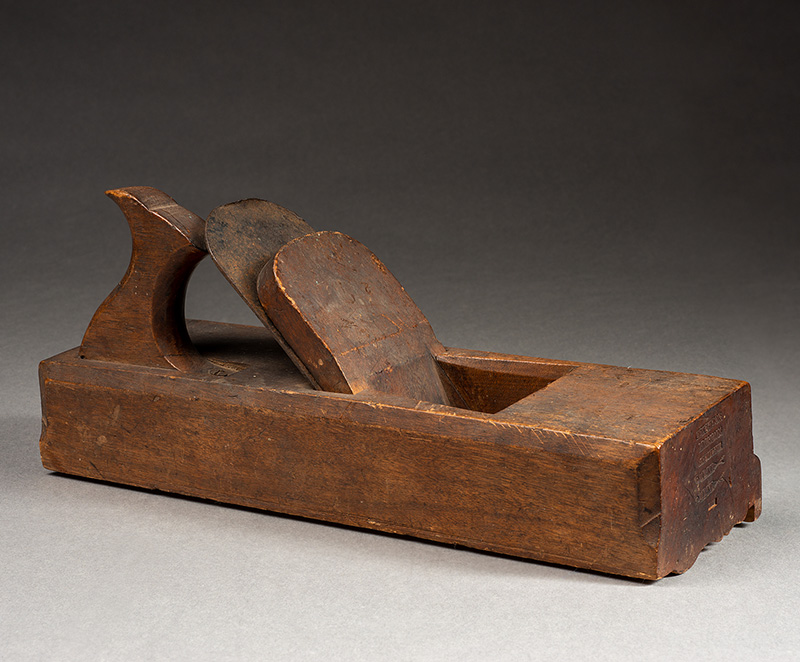Cornice Plane

| Maker | Cesar Chelor (c. 1720-84) |
| Date of Creation | 1775–84 |
| Location | Wrentham, Massachusetts |
| Materials | Birch, iron |
| Institution | Historic Deerfield |
| Credit Line | Gift of Amy Ramage Lyman, daughter of John Hilton Lyman and great great niece of Catherine Ramage Bliss of South Deerfield |
| Accession Number | 2022.9 |
| Photo Credit | Photo by Penny Leveritt |
Born about 1720, Cesar Chelor is the earliest documented Black planemaker in Colonial America. Chelor learned the art of plane making from his enslaver, Francis Nicholson (1683–1753), who worked as a planemaker in Wrentham, MA. During his enslavement, Chelor likely made many of Nicholson’s planes, but his contribution was hidden behind the maker’s stamp: “F. Nicholson, Wrentham.” In 1753, Nicholson died, and, as stipulated in his will, Chelor was emancipated. Nicholson provided Chelor with woodworking tools and land, thereby supplying him with the necessary capital to establish his own business. Chelor continued to work as an independent planemaker in Wrentham for 30 years following his emancipation until his death in 1784. His shop proved to be a success as evinced by the number of planes that survive bearing his mark, and the high quality of those planes, including this cornice plane boldly stamped, “CE CHELOR LIVING IN WRENTHAM.” One of many different types of planes produced by Chelor, cornice planes created complex moldings, such as crown moldings, used to decorate interior woodwork and furniture. The plane also possesses owner’s initials, “E.M.,” likely Elias Mann (1750–1825), a white cabinetmaker and housewright from Stoughton and Northampton, MA, who was possibly the plane’s original owner. The plane’s survival serves not only as a material reminder of the skill of its maker and the prosperity of a Black-owned business in Colonial and early Federal America, but also lends unique insight into the relationships formed between enslaver and enslaved and the patronization of Black businesses by white craftsmen in 18th-century New England.
